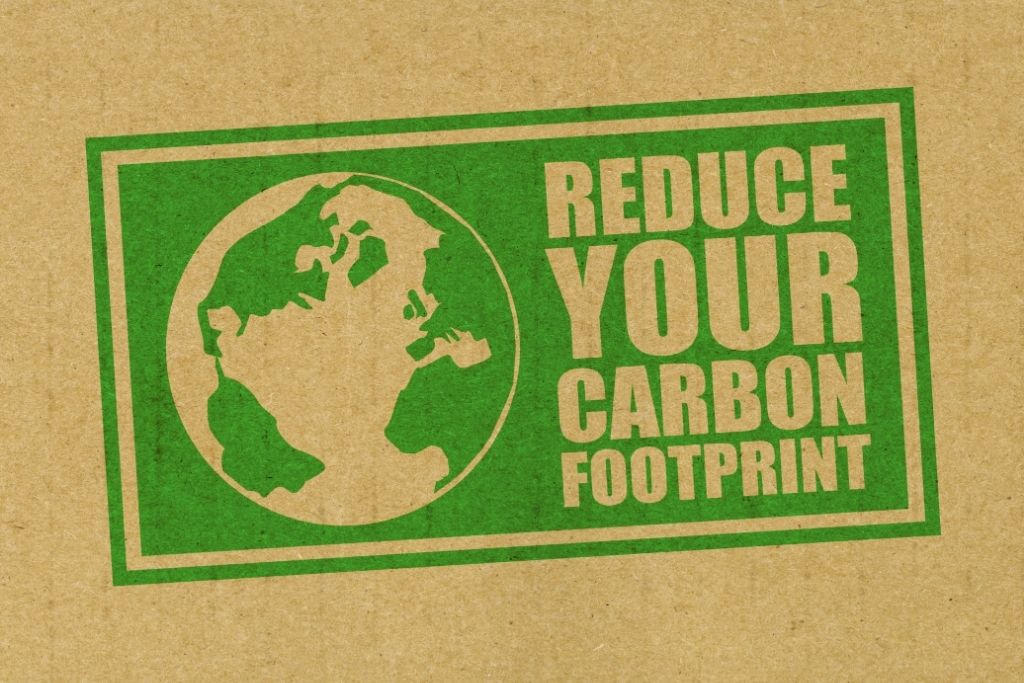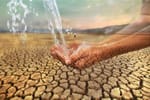Nowadays you can’t turn on the TV without hearing about the topic of climate change and the catastrophic effects that it’s having on our environment.
Reports on global warming seem to be everywhere and people are starting to get alarmed.
The benefit of environmental awareness is a good thing because it motivates people to seek simple ways to reduce their carbon footprint.
The term “going green” has become widely known and a bit of a household name.
You can’t miss all of the Ad campaigns about being eco-friendly on places such as the Internet, and satellite radio stations, and even read about it in blogs.
People start questioning themselves on how to go about this going green lifestyle.
What type of changes could take place if you were to go green and how will it affect your life?
What does going green even mean and how should you do it?
Is it all about the color green and how it should be part of daily living?
Does it mean that you should also patronize green food items such as leafy vegetables?
While eating vegetables is healthy, it is, however, not what going green is all about.
Going green is a lifestyle that focuses on conserving the energy and resources our planet Earth has provided us. All of this is for the sole purpose of saving the planet.
If you’re interested in discovering how to reduce your carbon footprint, then continue reading.
What Role Do You Play in Saving the Planet?
Recycling is nothing new and you have probably done it many times in your home.
You’ve most likely practiced energy conservation by turning off the lights, other home appliances, and electronics when you leave the room.
But the question is, is that enough? Most people think that the main solution is to give attention to the practices of big corporations.
After all, they are usually the ones to consume great amounts of energy and also contribute to large amounts of pollutants and garbage.
That may be true; however, some big corporations these days are stepping up to be part of the Going Green campaign by improving their manufacturing and operational processes to reduce pollution.
Why Should You Care About Going Green?
Our planet is facing different environmental issues and these have a significant impact on our daily lives.
Resources on this planet come in limited amounts and there are increasingly more people using them.
If we want future generations to have the privilege of enjoying a comfortable living experience, we need to do something fast!
Everything we do – big or little, good or bad – every day can somehow have an impact on our environment.
As an inhabitant of this plant, you have the free will to take over your life and make choices, and the impact it has on the environment follows.
What you eat, how you use electricity and water at home, where you go to take a vacation, and how you get from one place to another, all can have an impact on a global scale.
Every living thing on this planet will always depend on environmental resources for survival and it is crucial for everyone to take even baby steps to help minimize the negative impact their actions have on the environment.
Supporting a greener lifestyle is not just doing little things you can to save the rainforests, but it is also about doing something to improve your health, saving money while saving the environment, and overall improving the quality of life for every living thing on Earth.
What Does It Mean to Go Green?
The term “Going Green” is popularly used today and you may have heard it quite a few times.
Going green involves baby steps to doing things that do not involve over-exploiting the environment.
Basically, going green means living life individually or as a community in an environmental-friendly way a.k.a. eco-friendly.
It involves contributing to the balance of the ecosystem and the preservation of the planet.
Think About What You Do
Things you use every day, the activities that you engage in, and believe it or not, the food you eat can have an effect on the environment.
For instance, think about the soap, shampoo, and detergents that you are currently using.
Most of them contain chemicals that are washed down the drain and eventually find their way to rivers, reservoirs, and the sea. Just imagine having billions of people do this.
Consider the car you are driving to work, or riding in a cab or bus just to get to your office on time.
They emit greenhouse gases that significantly contribute to global warming, as well as lead, which can be harmful to living things.
Consider thousands of vehicles doing that.
Think about the chemicals, waste products, and noxious gases produced by industries and manufacturing companies as they produce items for human consumption in the form of clothing, paper, furniture, electronic gadgets, and the like.
It is hard to go about our daily lives without having to leave a trace of harmful substances and it is even more difficult not to produce even the slightest amount of pollution as we carry out our daily activities.
Despite the pollution that we bring to the environment, we still need to do something about it in the least possible way and that is what Going Green is about.
There are many things that you can do to minimize the impact that daily activities have on the environment.
Going Green Starts at Home
It is easy to go green and it usually starts at home on a small scale. To start off, you can use LED light bulbs and do away with fluorescent ones since the former saves energy and literally last for years.
It is easy to recycle bottles, paper, and cans as well; in fact, you can find several how-to projects online.
Using your air conditioning unit less or setting the thermostat at around 80 degrees in the summer can also make a difference.
Some people are so committed to the green lifestyle that they go as far as reconstructing their homes by making them extremely eco-friendly through the installation of machines that harness natural sources of energy like the sun and wind.
While not everyone can invest in remodeling their homes into an eco-friendly haven, the other option is to go for small green choices.
Turning off power equipment when no one is home is a great start. Turning the faucet off when you brush your teeth or even using biodegradable cleaning products can also help.
You can also uphold a green lifestyle by patronizing local market products, especially organic ones.
All in all, there are many simple choices that you can take to promote a healthier world to live in.
Imagine millions of people worldwide making those simple, yet green choices, collectively this can definitely have a positive effect on the planet.
The Issues We Face With Global Warming
The climate is changing; in fact, it has been changing over the last few decades.
The earth is getting warmer and several scientific reports can prove this. What is sad about it is that the problem is mostly caused by humans.
Global warming is a lingering problem and different animal and plant species and habitats tend to suffer more from this phenomenon.
The result could be devastating – the balance in the ecosystem can be disrupted.
Global warming is a hot topic of the current environmental issues we face today. Its effects on agriculture and animals are already frightening enough.
How much more when it comes to the human population? As most of the causes come from us, it is unfortunate to say that the effects it will have on us will be severe.
Causes of Global Warming
Global warming is caused by different factors but is mostly human-induced.
On a small scale, we contribute to harm to the environment through our actions, but when put together the millions of people on this planet, the impact can reach a global scale.
Carbon Dioxide Emissions
We depend on electricity so much that what we do not often realize is that this electricity comes from power plants that burn coal.
As this process takes place, carbon dioxide in great amounts is released into the atmosphere.
You can just see how trendy electronic gadgets are today, which only means that there will be an increased demand for electrical supplies.
The demand for cars is also increasing due to the alarming growth of the population.
More and more people need cars for transportation and as a result, there is an increased use of fossil fuels.
It goes back to carbon dioxide emissions as we burn gasoline for transportation.
Deforestation
Our forests are rich in resources and wood is one essential resource greatly needed in any part of the world.
We need wood for different purposes; paper products, furniture, construction, and the like, and as the demand increases due to population growth, deforestation results.
Forests are there to help remove and store excess carbon dioxide in the atmosphere.
But increasing deforestation only contributes to the accumulation of carbon dioxide, further harming the atmosphere.
Carbon dioxide emissions and deforestation are not the only causes of global warming.
There are plenty more and if we do not do anything about it, pretty soon the Earth will be a difficult place to live in or perhaps a bearing wasteland.
The Devastating Effects of Global Warming
Climate change is the most obvious effect of global warming and has been around for well over a decade.
Frequent storms, irregularities in weather, rising sea levels, wildfires that burn out of control, and melting glaciers are just some of the obvious signs of climate change.
Our natural resources will soon deplete due to our greed and over-consumption. Human activities such as agriculture, overfishing, and mining can result in the degradation of these resources.
If this trend does not stop, it is only a matter of time before we will exhaust our natural resources.
The List Does Not Stop
The environmental issues brought about by global warming are not just limited to what has been mentioned above.
There are more issues that surface each day making the list of problems longer as time passes.
If we do not take action, even the simplest ones, we may not have any other option but to suffer the consequences.
The Issues We Face With Natural Resources Today
Life on Earth depends on the availability of the world’s natural resources, which include water, energy, materials, and fertile land.
However, the human population is growing at an overwhelmingly rapid rate, also increasing the rate at which these resources are consumed.
The climate is changing; freshwater reserves and our forests are diminishing; there are only a few land areas that remain fertile and different animal and plant species are threatened with extinction.
If we want life to continue on this planet, we need to change our lifestyles and do what we can to preserve our natural resources.
The Issues with Natural Resources Depletion
Everything found in nature that can be turned into a product for consumption is a natural resource.
Modern technology can do so much in the name of convenience, but it is incapable of making trees.
However, technology can modify these resources and as it is trying to take over the world, the rate at which these resources are depleted has increased dramatically.
It is important to understand that not all the resources found in nature are unlimited.
But somehow, its depletion is inevitable due to the lifestyles we lead.
Increasing demands due to population explosion, human greed, and neglect all lead to the loss of these precious gifts of nature.
Common problems concerning our natural resources:
- The quality of land worldwide is not as pure as it was a hundred years ago. Forests have been cleared out and have been replaced with agricultural lands and residential lots. Vast agricultural lands deplete more nutrients much faster than the rate at which they are replaced. Fertile lands are decreasing, while consumption and demand continue to rise.
- Our waters today are polluted as a result of waste products coming from industrial sites.
- Water pollution brings on several negative consequences. One is forcing the closure of beaches due to poor quality of water. Another is that fish may become unsafe for consumption. The potable water in your area could be contaminated with harmful microorganisms that can cause serious health problems.
- The ocean is also at stake, especially with the growing problems of global warming. The ability of the ocean to replenish the fish population cannot keep up with the rate of consumption. On top of that, climate change has also affected the productivity of marine life.
- The lush forests are threatened by continued deforestation to satisfy the economic needs of many nations. Biodiversity is greatly affected as the consequences are suffered by species that thrive in the forest, which could eventually lead to their extinction.
One Planet to Save
The human population takes up 30% of the Earth’s resources and our planet may not seem to keep up with the high demand.
This leads to deforestation, polluted air and water, degraded soils, and the dramatic decrease of different plant and animal species.
The problem intensifies as the human population and rate of consumption continue to increase and if nothing changes, it is likely that this one planet we have may not be able to sustain life.
The Issues We Face With Trash Today
Solid waste is considered garbage produced in our homes, offices, and industrial companies.
The production of solid waste and its toxicity is increasing.
Most of the products we buy from the market contain harmful chemicals, and when these products are combined with other chemical products, your health, and our environment are at risk.
There are different waste facilities for every nation including incinerators and landfills.
Humans Contribute Too Much Waste
The human race is responsible for more than 30% of the world’s generated waste. Just imagine how much household garbage you throw out every day.
You tend to throw out trash of different kinds on a daily basis. It is in the form of paper (white paper, magazines, tissues), plastic (food containers, bags of chips, medicine bottles), glass (food jars, beer bottles), food (vegetable peels, leftovers), and so many more - it is for certain that you can still think of a lot more examples.
In addition to the solid waste coming from your home, there are also pieces of trash lying out on the streets; those that come from the commercial sector such as restaurants, hospitals, and shops; the industrial companies, manufacturers, and agricultural sector.
In the United States, about 220 billion tons of garbage per year are produced as reported by the Environmental Protection Agency.
While statistics for the entire planet are not readily available, just consider that the U.S. comprises 4% of the world population – that will simply tell you that it is a LOT.
The Toxic Nature of Waste
Government regulations on the chemical industry are not that stringent, which results in the manufacture of products that may contain harmful, untested chemicals.
These products are consumed and eventually thrown away. There are still chemicals known to be harmful (such as BPA in plastic toys) that are still used due to poor regulation.
The toxic nature of waste intensifies the problem and people do not really have a clear solution for these issues.
Packaging is definitely a serious contributor to solid waste and a huge percentage of waste products come from packaging, which is made of plastic.
Plastic does not biodegrade and it does not disappear even for centuries and that will seriously wreak havoc on our environment.
Imagine the lifespan of a plastic material and the fact that a lot of trash thrown away is made of plastic – it is definitely concerning.
How Garbage Pollution Affects the Environment
Garbage pollution affects the environment in many ways. For one, the chemicals that are present in the waste are harmful to the environment and all living species.
Garbage pollution is also a source of bacterial diseases.
Uncontrolled trash problems can also radiate into something more serious like having the garbage find its way into rivers and streams, polluting the waterways, and harming aquatic life.
The long-term effects brought about by trash problems are not easily reversible especially when chemicals are involved.
While there are several campaigns and projects that aim to solve trash problems, it still helps if you make small contributions to prevent the problem from becoming worse.
The Issues We Face with Our Food Supply Today
Global warming has been believed to be beneficial for the food and agricultural industry for quite some time.
This is due to the high levels of carbon dioxide from global warming which were once thought to help with photosynthesis for the greeneries, thus, the belief that there will be a boom in the agricultural sector and food supply.
The theory was backed by the fact that there has been a great improvement in barley production in Iceland amidst global warming.
But as more research experiments have been conducted, it was revealed that the global warming effects on food supply and agriculture are not good at all.
Photosynthesis is necessary for plants to grow and manufacture their own food, but with the drastic increase in temperatures brought about by global warming, these plants will find it hard to survive.
In addition, climate change has brought about weather irregularities, bringing in floods and hurricanes – surely, the survival of t will be a total struggle.
Furthermore, these plants are primarily used for human consumption and when they are affected by the prevailing high temperatures, food shortages will occur.
How Global Warming Affects Food Supply
It has now been established that global warming can have negative effects on agriculture and ultimately food production.
These effects are:
Reduced yield - With global warming, expect that there will be reduced yields of food.
High temperatures and drought can bring stress to crops and livestock, making them vulnerable to diseases and affecting their productivity.
Decreased soil arability – with climate change, higher latitudes will receive the right temperature suitable for growing, only that the soil and nutrients found in these areas are not suitable for growing produce.
Alternatively, lower latitude areas are suitable for farming but with climate change, it becomes the less productive ground.
Need for Irrigation – In some parts of the world, crop production will depend on rain.
However, since the rise in temperature makes rain absent most of the time; the need for irrigation becomes the next option.
As a result, there will be more expenses to take care of and water access will also become a problem.
More Pests– Pests, fungi, and weeds tend to thrive better in warmer temperatures and under high levels of CO2.
New pests may be introduced in different regions as environmental temperature and humidity change.
For instance, pests thriving in low-latitude areas may migrate to higher latitudes.
Effects on Fisheries – fisheries are already affected by pollution, global warming, and over-exploitation.
The changes in water temperatures in oceans, lakes, and rivers, coupled with the rising sea level and melting ice can have a great impact on different species of fish.
For instance, they become more vulnerable to diseases in warmer waters.
Some species of fish, are fortunate enough to have adapted to the change by migrating to high latitudes, but for others, like freshwater species, there is no other option.
Food shortage is a serious threat to society since humans rely mainly on food for survival.
The future of the global food supply will depend on how different societies can handle the changes brought about by global warming.
The Issues We Face With Air and Water Quality
It would truly be disappointing to need your inhaler even if you are just doing a 4-mile run.
Study shows that the increase in CO2 levels brought on by global warming increased the amount of pollen present in the air, which only means that people allergic to pollen are at higher risk.
In addition, the air has become dustier since global warming equates to drought, which consequently produces wildfires, and in turn, brings in more dust into the air.
The temperatures of the ocean have also risen and will continue to rise if global warming is not put to an end.
This would result in threatened marine life.
These are just some of the effects that global warming can have on water and air, which I will be briefly discussed next.
How Does Global Warming Affect the Air You Breathe?
Climate changes from global warming can have a substantial impact on the health of people worldwide.
Global warming is responsible for the spread of diseases and the reduced quality of air.
Carbon dioxide is the main pollutant that contributes to global warming and is emitted from cars, power plants, and airplanes.
Other human activities may also be held accountable for their emissions.
As climate changes, seasonal months are expected to fall out of sync.
Spring would come early, fall ends late, and there will be heavier rain and snow.
Rising levels of carbon dioxide and seasonal changes make a great recipe for pollen to be released into the air. In short, asthmatics will become sicker in the coming years.
The air has been polluted and its quality has been reduced as a combination of noxious gases circulates in the atmosphere.
On top of that, it becomes easier for diseases and illnesses to spread, making people more vulnerable to health problems.
How Global Warming Affects the Quality of Water
The quality of water is also significantly affected by global warming.
If temperatures continue to rise as part of the global warming process, the flow of water, in rivers, for instance, decreases.
As a result, pollution will be condensed in the rivers because there will not be enough water to dilute the pollutants.
Ultimately, sewage treatment facilities are required to control these pollutants, and setting them up can be expensive.
Reduced water quality for the lower species can mean a threat to their survival.
When water temperatures rise, it leads to a decrease in the levels of dissolved oxygen – an element needed by aquatic animals.
Hence, these animals will be under stress and may fight for survival – that is, if all of them would really survive.
Air and water are both essential for the survival of living things.
While different species can adapt to changing environmental conditions, the absence of air and water cannot sustain life, and having poor quality of those elements is just as bad.
The issues we face with water and air quality today are not restricted to what was pointed out in the aforementioned but are all the more a reason for people to do their part to make that change.
The Legacy We are Leaving for Future Generations
Global warming is a hot and controversial topic since it brings serious consequences in the economic, political, and social sectors which can greatly affect future generations. Some people tend to deny that this global phenomenon does exist.
This denial comes from people who wish to escape having to deal with what global warming brings. But no matter how much you want to deny its existence, global warming is a reality and it is happening now.
It is, therefore, important that we face the issues brought on by this phenomenon with determination for our own sake and the sake of the coming generations.
In order to achieve this, we need to understand the beginning of all this and know what to do to solve the problem.
What We Can Contribute to Stop Global Warming
The global phenomenon can be frightening, considering its dire consequences, but there are ways to stop it.
The main point is to conserve our natural resources so we don’t have to demand more to the point of resource depletion.
Helpful tips to reduce your carbon footprint:
- Recycling plastic materials instead of buying new ones
- Using eco-friendly bulbs instead of conventional light bulbs
- Support tree-planting campaigns to compensate for the loss of trees in deforestation
- When appliances are not in use, turn them off
- Advocating the fight against global warming through education
- Support the use of renewable sources of energy
Get the Kids Involved
The younger generations deserve to enjoy a healthy Earth; they should have the privilege of enjoying what the planet has to offer.
However, with the threat of global warming, this privilege has been threatened and it is up to adults to help make the world a better place for them to live in.
There is no better way to leave this legacy to future generations than to have them involved in the advocacy.
Educating children and getting them involved is a great idea to help fight this global phenomenon.
Kids should be educated about the basic facts of global warming through fun-filled activities and conversations. You can show them what to do to support the cause.
Creativity is the key to keeping their attention and if you wish to explain global warming, it should be done in a way that will not lose their interest.
Science experiments can be a very smart idea in order to get the kids involved and understand the problem.
No Work Is Too Little When it’s All about Saving the Planet
Not all people will appreciate the green lifestyle and the idea of conserving natural resources, but all of this is for the betterment of future generations.
The attempt to save the planet will definitely take a lot of work and not all people may be committed to going through that.
But every little thing you do to contribute would work when it is all for the benefit of the planet. Changing one’s lifestyle is not easy to do and some would not find it very enjoyable.
But in the end, all the efforts to save the planet will pay off and the younger generations will be the ones to enjoy the benefits of environmental education.
The simplest green choice can make a big difference in defending the only planet that is home to the human race and that is the legacy we are leaving for future generations.
Developing a New Relationship with Mother Earth
In order for a relationship to work, it should be a matter of giving and taking.
The relationship humans used to have with Mother Earth is all about taking advantage.
Since Mother Earth has provided us with just about everything we need, we tend to just take it willingly to the point of abusing the privilege, without realizing the possible negative consequences.
For many years, our planet has not ceased to provide us with rich natural resources, but today, the story has come to a fork in the road.
There is always an end to everything and it won’t be long before Mother Earth stops giving.
What humans took from the planet, they never gave back, for if they did, things like global warming and climate change would not have happened.
However, it is not too late to develop a new relationship with our dear planet.
Nothing is ever too late if it is simply for the benefit of the planet we call home. Do what you have to today and reap the benefits later on.
Saving Mother Earth
When our relationship with Mother Earth was once all about taking advantage of what we are provided for, the new relationship should now be about giving back to her by saving her.
Since people are now aware of the consequences of abusing natural resources, others have put in their efforts to do something about it.
Fortunately, people have awoken and are starting to take those steps. Since the advent of global warming, different campaigns have been launched to protect the Earth all the more.
In addition, some of the major corporations that were once a major source of pollution are also starting to do their part to help save our home planet.
Even amidst the raging modern technology, efforts to save the planet have not diminished. In the modern world, people are fond of using electronic gadgets, one after the other, supporting this trend.
While at this point the demand for such goods cannot be controlled, the big corporations are stepping up to at least make up for the energy they consumed to make those products, as well as the electricity required for the product to work.
In a more specific sense, take the web hosting industry as an example, it is much needed for businesses and they, too, have decided to go green with their services.
Going Green Choices
Going green does not have to be lavish as installing expensive solar panels or wind turbines to be able to harness renewable energy sources.
Although it may involve a change in lifestyle, it does not require you to be someone that you are not.
If you cannot afford solar panels, do not push them, you can still do so many things to contribute to the protection of the planet, even in your own little way.
Going green is a choice to make, and a simple one for that matter.
Every little thing you contribute to save the planet makes a very big difference.
Start small and it can go a long way in developing that new positive relationship with Mother Earth.
The Benefits of Going Green for the Earth and Our Wallets
It is quite obvious that there are plenty of benefits to reap from going green. The first and most important benefits go to the environment.
The Earth is the only planet that we live on and it has everything necessary for our survival.
Of course, we want to do everything in our power just so we can continue living on this planet.
There may be no further explanation needed why going green can benefit the Earth, but what people do not realize is the extent of this positive impact.
Reduced Pollution
Choosing to uphold a green lifestyle helps reduce the amount of pollution distributed to the soil, air, and water.
By limiting your dependence on fossil fuels and more on alternative energy resources; recycling materials; and reducing waste, there will be fewer pollutants for the environment to take in.
Conservation of Natural Resources
The majority of the world’s sources of electricity comes from burning fossil fuels, such as natural gas, coal, and oil.
Burning these fuels only emits greenhouse gases, which can have a detrimental effect on the environment.
You can cut down emissions by choosing to use alternative energy sources and reducing energy consumption.
Preservation of Different Species
Going green is going pro-life as this lifestyle helps preserve the natural habitats of different species of plants and animals.
Various plant and animal species are threatened with extinction due to deforestation.
If you reduce the consumption of paper products or support recycling, you can decrease the rate at which these species are extinct.
In addition, pollution also finds its way to the waters and for that, going green also helps in the preservation of marine life.
Less Waste Production
A green lifestyle encourages people to minimize their consumption and recycle items to help reduce waste production.
If you reduce, reuse, and recycle, you are doing something to decrease the amount of waste that ends up in landfills.
These waste materials biodegrade, and they release carbon dioxide in the process which can harm the environment.
Going Green Also Benefits Your Wallet
Apart from the environmental benefits, going green can also help you save money without you realizing it.
The price of gas could go up, but you have the option to take your bike to work or even walk to get to your destination.
This not only helps reduce carbon dioxide emissions from cars, but also saves you money on transportation, and at the same time get some exercise.
Earlier I mentioned how climate change and global warming can have a detrimental effect on your health.
If you put forth the effort to save the planet by going green, you are also doing something to minimize the risk of developing health problems brought about by climate change.
In turn, this could save you a lot of money from medical expenses.
Conclusion
You just learned some tips on How To Reduce Your Carbon Footprint, which is extremely important to the preservation of our planet and all of its lifeforms.
No single person or group can single-handily save the Earth, as this will take a collective effort on all of our parts.
The key to living a green lifestyle is to educate yourself on everything that you can do, make a list, prioritize it, select the methods that you are realistically able to do, and then implement them consistently.
That’s how you can do your part without getting overwhelmed.
I applaud you for being interested in taking care of our beautiful planet!
Download Our Free E-book!







